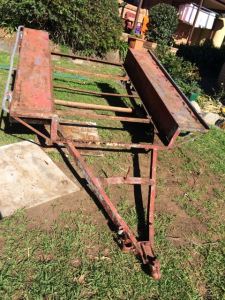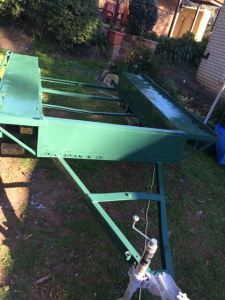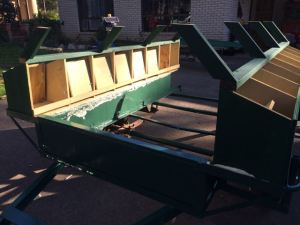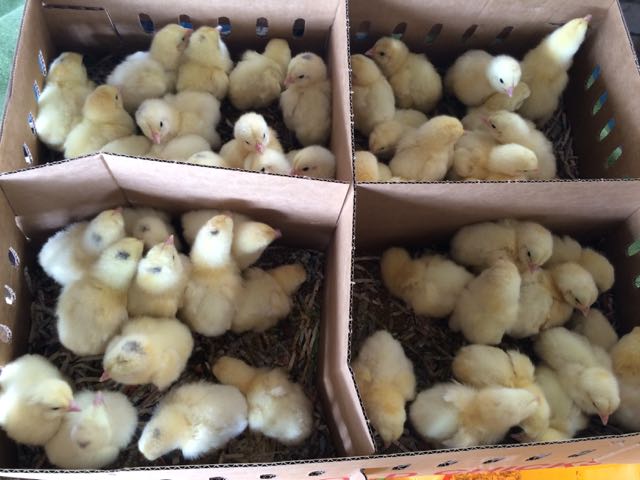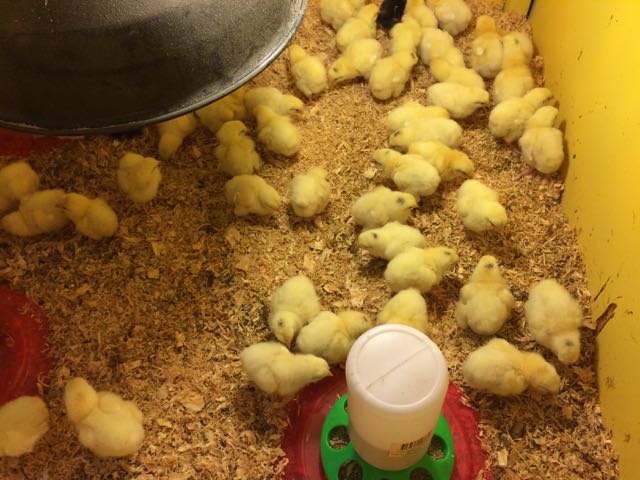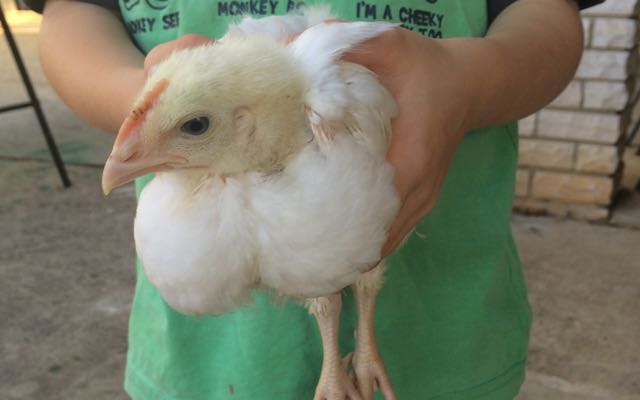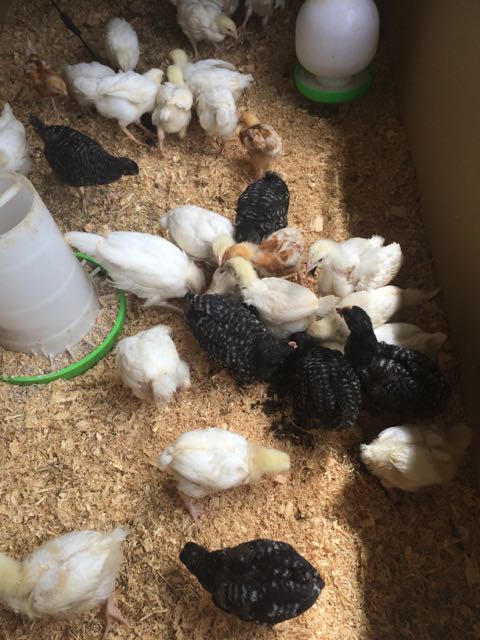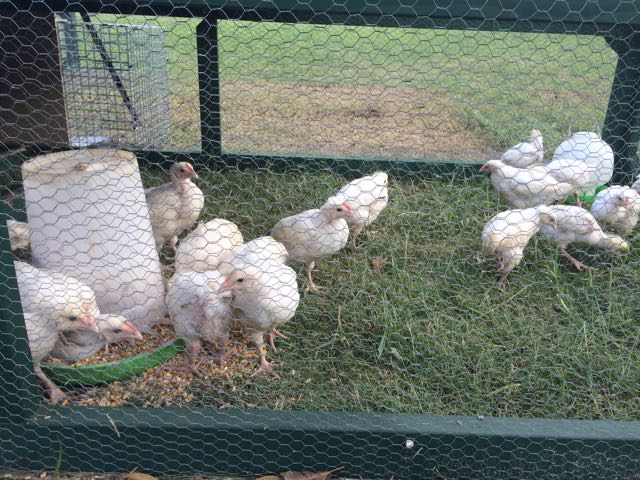There are many different ways to house your chickens, but when your aim is to ensure that your birds get access to plenty of fresh pasture daily, there are a few problems that need to be addressed: Predator protection, Portable Housing, Feeding and Watering.
Predator Protection
We are located in the Sydney basin (in Australia). What that means is that we have to contend with a rather large population of feral foxes, wild dogs, bored neighbourhood dogs, a few native hawks and a resident pair of Wedge Tailed eagles. Just a few things 😉
While we have had the occasional loss of a bird to a hawk, we noticed that they only seemed to prey on the smaller birds. So this was easily remedied by ensuring that all our birds are in an enclosed “avery” until they are at least four months old. Plus the hawks are hesitant to attack anything too densely packed together, so keeping the chickens close to each other is important.
Our resident Wedge Tailed eagles are actually more scavengers, preferring a carcass to a live bird. So the loss of a live chicken to these guys was negligible. The Wedge Tailed eagles easily carried off our geese that the fox killed one night … we were at the house deciding where to bury the 3 geese carcasses and an eagle came in and took off with one while we weren’t looking!
That only left us with how to deal with the four legged predators … and found that we had to make a decision on a portable fencing solution. After copious amounts of research, we decided to try out electric netting fences. We have tried two brands of electric netting fence so far and they each have their pro’s and con’s. Here is what we found…
Thunderbird Electric Poultry net:
Pro’s: Lightweight, has steel post step-in’s that don’t bend or warp,
Con’s: Easily tangled, lean pullet breeds can squeeze through the holes
Recommendation: This netting solution has one live wire and an earth, which can conveniently be any of the steel post step-ins. While this is the lightest net, the vertical stays between live wire are not very rigid and cause the net to tangle easily when moved; when moving it at night (which happens usually during Winter) this can be frustrating. The biggest problem we had though was that the smaller pullets could easily squeeze between the holes. Now we’re now talking bantams here, but rather leghorn pullets, which are quite lean birds but not a small bird. Because a birds’ feathers are essentially made of keratin, they are insulated from the effects of the electric pulse. This was a major issue for us, as the birds learned very quickly that there were lots of yummy tidbits in the garden beds nearby. Also, we were alternating the use of the Thunderbird net and the Kencove net in moving our birds. On the night that we were using the Thunderbird net, a fox did manage to get into the enclosure and slaughtered 24 meat birds inside one of the chicken tractors. We’re not sure how it got in either as the fence was operational on all lines. Finally, customer support was non-existant from Thunderbird. When we wrote tot he Thunderbird team … no one even bothered to respond! For these reasons, the Thunderbird Poultry net gets a big “NO” from us.
Kencove Starternet:
Pro’s: Light weight, difficult to tangle, small holes in fence, can be run as either a live wire and earth or a double live
Con’s: has plastic step-in’s which warp easily (but these are about to be replaced free of charge by our supplier with a new solution), more expensive.
Recommendation: Although the cost of the Kencove product was $60 more, it has paid this back by ensuring that the chickens do not have access to our growing beds. There is nothing more frustrating than finding a few chickens happily dust bathing in freshly prepared growing beds or pecking out fresh pea sprouts! Also, the fact that the stays between the live wires are more rigid ensures that the fence does not tangle as easily as the Thunderbird netting solution. So the Kencove Starternet gets a big “YES” from us.
Portable Housing
Choosing to keep your chickens on pasture makes housing much more difficult than just erecting a shed. One of the main reasons we chose to raise our birds on pasture is that the birds don’t sleep in their own excrement and have fresh clean pasture available to them each day. This reduces the potential for parasities and bacterial infections to affect the flock as their home is clean, fresh pasture and not soiled bedding.
We have tried two methods of portable housing for our chooks. Both have been home made to meet a particular purpose at the time: The Joel Salatin style chicken tractor and a trailer converted to a chicken caravan.
Chicken tractor:
If you have read any of Joel Salatin’s books, you will see that he is willing to share with you all the trial and tribulations of keeping animals according to their natural rhythms. His chicken tractor was excellent. Now while he has stated that foxes don’t like change and won’t dig under a chicken tractor that is moved daily … they must have a different breed of fox in the US because the foxes here don’t give a toss how often it is moved … if it can be dug under then it will be! We lost a few birds on our first trial night …. so added a wire skirt around the tractor. This needed to be pinned each day which proved time consuming. We then teamed up the chicken tractors with an electric fence …. HEAVEN! The perfect solution.
Here are a few of our meat birds and Plymouth Rocks in their tractors.


Chicken caravan:
We increased our laying flock to a little over 100. In doing so, we needed to have a portable solution for lots of chickens which was off the ground in Winter so the birds did not freeze at night … hence the idea of the chicken caravan.
There are multiple solutions out there. Even some amazing commercial ones which have solar powered chicken excluders on the nesting boxes to ensure that the eggs are clean. While these solutions are time saving, we just couldn’t justify spending around $10K for a portable chook house. So we built one instead for a fraction of the cost.
Here are a few images to describe what we did. The downside of the chicken caravan is that you need a vehicle to move it around any great distance. It can be pushed around by hand if you are only moving it a short distance though.
Feeding
Chickens are gluttons! If you left a bag of feed out for them to eat from, they would scatter the entire bag everywhere within minutes, searching for their favourite morsels. Plus, if you are using pelleted feed, this would quickly dissolve easily with assistance from the morning dew.
Chickens need to be rationed in their meals. Always provide enough food for them to be happy, but not too much that it is wasted. For our 100 egg birds, we have found that the perfect amount of feed for them is around 5-6kg of feed per day. The rest they get from the pasture (insects and vegetation).
We use stainless steel treadle feeders in our enclosed pens, but these are cumbersome to keep moving around. We have also used plastic automatic feeders, but these are susceptible to cracking when left out in the sun for extended periods.
For our field birds, we use large plastic trays. We fill four trays (each holds around 1.5 kg) and sprinkle on Diatomaceous Earth as a wormer and Cocchidiosis treatment. These get placed inside the electric fence every morning and they are mostly empty by evening. Yes, they scratch some out on the ground but they clean it up during the night when they get peckish.
Watering
There are so many different solutions out there for watering and we have tried many. For us, we have found that the best solution are two to four 15L stainless steel waterers. We are looking at a barrel system for the upcoming summer months as the chickens need lots more water then.


